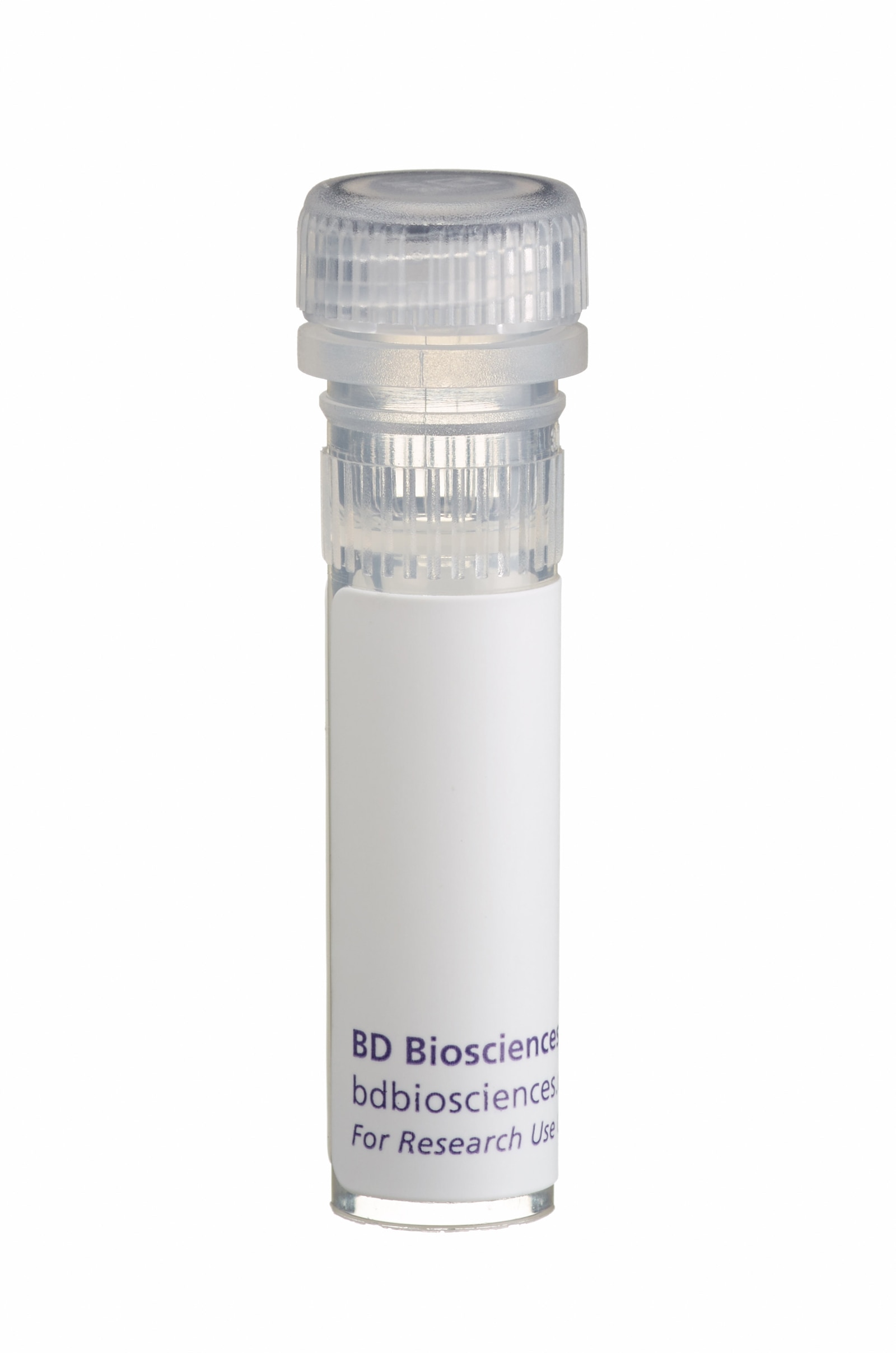-
Your selected country is
Middle East / Africa
- Change country/language
Old Browser
This page has been recently translated and is available in French now.
Looks like you're visiting us from {countryName}.
Would you like to stay on the current country site or be switched to your country?
BD Pharmingen™ Recombinant Rat IL-2
(RUO)

Recombinant Rat IL-2
Regulatory Status Legend
Any use of products other than the permitted use without the express written authorization of Becton, Dickinson and Company is strictly prohibited.
Description
Interleukin-2 (IL-2) is a potent, multifunctional cytokine produced by activated T lymphocytes. It is responsible for the activities attributed to T cell growth factor, thymocyte stimulation factor, thymocyte mitogenesis factor, killer helper factor, and T cell replacing factor. IL-2 stimulates the growth and differentiation of T cells, as well as cytokine production by T cells. In addition, IL-2 can contribute to the activation of monocytes/macrophages and NK and LAK cells and can augment B cell growth and differentiation.
Formulation and Purity
Recombinant rat IL-2 is supplied as a frozen liquid comprised of 0.22 μm sterile-filtered aqueous buffered solution (pH 7.2) and containing 2 mg/ml biotechnology grade, low-endotoxin bovine serum albumin, glycerol and with no preservatives. The endotoxin level is ≤ 0.1 ng per μg of rat IL-2 protein, as measured in a LAL chromogenic assay. This recombinant rat IL-2 is a single band of approximately 16.5 kD as determined by SDS-PAGE analysis on 10 - 20% gels run under reducing conditions.
Preparation And Storage
Upon initial thawing the product should be aliquoted into polypropylene microtubes and frozen at –80°C for future use. Alternatively, the product can be diluted in sterile neutral buffer containing not less than 0.5 - 10 mg/ml carrier protein, such as human or bovine albumin, aliquoted and stored at ≤ -70°C. For in vitro biological assay use, we recommend carrier-protein concentrations of 0.5 – 1.0 mg/ml. For use as an ELISA standard we recommend carrier-protein concentrations of 5 - 10 mg/ml. Failure to add carrier protein or store at indicated temperatures may result in a loss of activity. The product should not be diluted to less than 10 μg/ml for long term storage. Carrier proteins should be pre-screened for possible effects in an appropriate experimental system. Carrier proteins may effect experimental results due to toxicity, high endotoxin levels or possible blocking activity.
Recommended Assay Procedures
1. Biological Activity
Activity is tested: in a Proliferation assay using CTLL-2 indicator cells
Specific activity: 0.6 - 5.0 x 10^8 Units*/mg
ED50: 20 - 150 pg/ml
Observed Dose response: 100 fold
* A Unit is defined as the amount of material required to stimulate a half-maximal response at cytokine saturation.
Note: This application is not routinely tested at BD Biosciences.
2. ELISA Standard
Recombinant rat IL-2 is useful as a quantitative standard for measuring rat IL-2 protein levels in an IL-2 specific sandwich ELISA. To obtain linear standard curves, doubling dilutions of this rat IL-2 standard from ~2,000 to 15 pg/ml should be included in each ELISA plate.
Product Notices
- Since applications vary, each investigator should titrate the reagent to obtain optimal results.
- Source of all serum proteins is from USDA inspected abattoirs located in the United States.
- Please refer to http://regdocs.bd.com to access safety data sheets (SDS).
- Please refer to www.bdbiosciences.com/us/s/resources for technical protocols.
Development References (7)
-
Gillis S, Ferm MM, Ou W, Smith KA. T cell growth factor: parameters of production and a quantitative microassay for activity. J Immunol. 1978; 120(6):2027-2032. (Methodology). View Reference
-
Kashima N, Nishi-Takaoka C, Fujita T, et al. Unique structure of murine interleukin-2 as deduced from cloned cDNAs. Nature. 1985; 313(6001):402-404. (Biology). View Reference
-
McKnight AJ, Classon BJ. Biochemical and immunological properties of rat recombinant interleukin-2 and interleukin-4. Immunology. 1992; 75(2):286-292. (Biology). View Reference
-
Smith, KA. Interleukin-2: inception, impact, and implications. Science. 1988; 240(4856):1169-1176. (Biology). View Reference
-
Thompson LP, Di Sabato G. Purification and characterization of two forms of rat interleukin-2. Cell Immunol. 1988; 114(1):12-26. (Biology). View Reference
-
Watson J, Mochizuki D. Interleukin 2: a class of T cell growth factors. Immunol Rev. 1980; 51:257-278. (Biology). View Reference
-
Yokota T, Arai N, Lee F, Rennick D, Mosmann T, Arai K. Use of a cDNA expression vector for isolation of mouse interleukin 2 cDNA clones: expression of T-cell growth-factor activity after transfection of monkey cells. Proc Natl Acad Sci U S A. 1985; 82(1):68-72. (Biology). View Reference
Please refer to Support Documents for Quality Certificates
Global - Refer to manufacturer's instructions for use and related User Manuals and Technical data sheets before using this products as described
Comparisons, where applicable, are made against older BD Technology, manual methods or are general performance claims. Comparisons are not made against non-BD technologies, unless otherwise noted.
For Research Use Only. Not for use in diagnostic or therapeutic procedures.
Report a Site Issue
This form is intended to help us improve our website experience. For other support, please visit our Contact Us page.